Some of the Reasons

SOUNDS BETTER


McIntosh MCD7007 Compact Disc Player SOUNDS BETTER
With the MCD7007 McIntosh Compact Disc Player, performance moves to a new pinnacle of cutting edge technological achievement and highest quality music reproduction. It introduces a new massive cast disc drive platform whose variable reluctance suspension system is adjusted and tuned to reduce or eliminate the impact of vibrations and shock and a low mass, and a new high compliance laser pen assembly. Every aspect of performance is improved: focusing and tracking, decoding, error correction, digital filtering, digital to analog conversion (converters are specially selected for matched channel to channel linearity). Even with dirty or damaged discs, even when the player is bumped or knocked, the music retains its surpassing purity. The full integrity of the sound is preserved beginning with the readout from the compact disc through to the gold-plated connectors on the output.

Laser Scanning Assembly--The McIntosh laser scanning assembly
has more integrated electronics, and more compact mechanics with fewer parts.
Lower inertia provides for even more accurate control, less friction, less
wear, outstanding trackability and longer life.
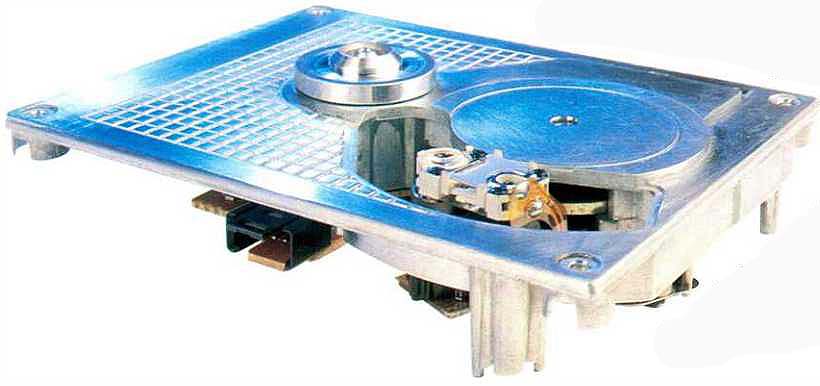
Trackability is the extent to which a player stays on track to read out
all the encoded information on a compact disc. The McIntosh player is engineered
to track better than others, even when the disc has deposits, fingerprints,
scratches, etc.
A laser beam cannot sit in a groove. It has to be steered along a microscopically narrow track and held at the exact focal distance. The quality of the read-out depends on built-in trackability. The McIntosh solid-state laser unit avoids unnecessary bulkiness and complexity to insure ideal trackability.
The elegantly compact single-beam laser pen is precisely balanced. It is held on track by a servo that responds to disc eccentricity or unevenness, has built-in compensation for varying disc reflectivity or changes of the laser, and remembers its proper position if atmospheric deposits, fingerprints, scratches etc. should interrupt the light beam. The focus servo is equally impervious to light variations, and it is exceptionally fast and accurate on the initial run-in where it is vital to establish the focal distance quickly. Better trackablility produces a higher quality readout, refined still further by superior error correction.
The new low-mass laser pen accesses tracks faster and more accurately. Average access time is no more than 1 second. It's easier to skip tracks or indexes, forward or backward, to go to any required piece of music, or to find the exact point wanted within a music passage.
Maximum strategy Decoding and Error Correction
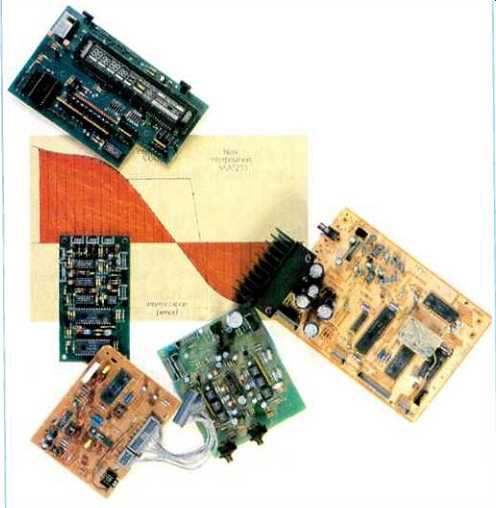
The single-chip Decoder and Error Corrector achieves the
maximum obtainable performance.
The digital audio signal read from the disc is thus as clean and undistorted as it can possibly be, with scratched or soiled discs equal in quality sound to new ones.
Improved Digital Filter Reduces Audio Ripple, Increases Stop Band Attenuation
The quadruple oversampling digital filter now has 2 x 24 more taps. Ripple within the passband is reduced to an utterly inaudible level, and the stop band attenuation is more than a 120dB: both significant contributions to the extra sound purity.
Enhanced soft muting ensures that there are no clicks or pops when starting, stopping or pausing, and smoothly silences any readout interruption too large for the error correction circuits.
Dual Digital-to-Analog Converters
The dual DAC-specially selected for high matched input to output linearity incorporates separate 16-bit converters for left and right channels. There is no multiplexing, no delay time between channels, fully equal to 18-bít resolutions.
Laser Focusing and Tracking
Dual high-precision servos are integrated to a higher degree than ever, embodying many functions that have to be performed with discrete components in other players. For these functions, there is no wear, no deterioration with time, no adjustments to go wrong, a permanent improvement in readout accuracy.
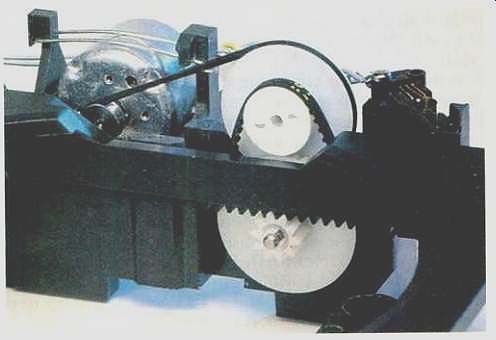
- Motorized front-loading tray with illumination and anti-jamming protection. A touch on the drawer's front closes it for automatic play or standby for additional programming.
- 10-key pad selection of tracks, indexes or times for immediate programmed playback.
- "Music scan" auditioning with programming facility.
- Track or index replay: next track or back track to any previous or following track or index. Fast access.
- Fingertip random order programming of up to 20 tracks, indexes or time periods.
- 3-speed forward or backward music search.
- First two speeds with sound sampling for audible search. Unique search protection during playback when laser reaches first or last track.

McIntosh C31V Audio/Video Remote Control Center SOUNDS BETTER
Audio magazine's product review on the McIntosh C31V AUDIO/ VIDEO REMOTE CONTROL CENTER stated:
"McIntosh audio components enjoy a worldwide reputation that few others can claim. It has been said that once you become a McIntosh customer, you will remain one for life... Furthermore, judging by the internal construction, I would guess that it will continue to provide unimpaired service long after many other currently popular or highly publicized preamplifier/control units have been relegated to the trash heap. I know several audio enthusiasts who still own and swear by McIntosh products which they purchased in the early 1960's, and there's every reason to believe that owners of the C31V will enjoy its performance well into the next century."
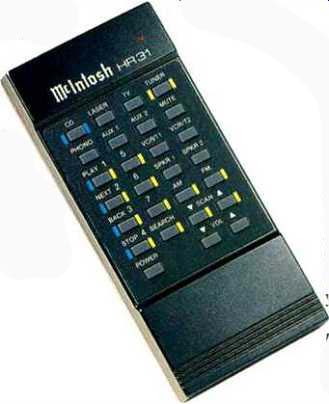
Cutting edge technology
does not mean the sacrifice of versatility nor the abandonment of simplicity
of operation. Proper engineering weds the two into usefulness with ease
of use. Even though the back panel is populated with an abundance of connecting
facilities the front and operating panel remains easy to use.
Because it is self illuminated, it can be readily read in any light and the nomenclature is descriptive of functions.
Again to quote Audio: "The C 31V has enough inputs (six high-level pairs, two tape monitor loops, two loops for external processors, and a low-level phono input pair) to accommodate numerous audio program sources as well as the audio signals from VCRs, TV monitors, and videodisc players ...The two tape monitors, whose switching is also electronic, can be used for audio tape decks or for the audio from VCRs: also available in an optional video selector, the MVS-1, which automatically switches video signals along with the audio.
Overall volume level is adjusted by an electronically switched ladder attenuator, with left/right tracking accuracy controlled to a fraction of a decibel. In fact, in my test I could detect no difference in output level between channels at any volume setting from maximum to 70 dB below maximum." "The loudness-compensation control is independent of the volume control. In any audio system, correct compensation depends on many variables besides volume-control setting, including recorded level, output level of the signal sources, amplifier sensitivity, speaker efficiency, and room acoustics.
The C31V's design allows you to dial in the precise degree of compensation needed for low listening levels in your particular system.
Instead of tone controls, the C31V is equipped with a five-band equalizer. A built-in headphone amplifier feeds a front-panel headphone jack, and all controls are effective when listening to headphones." Audio concludes with: "After hooking up the C 3IV to my reference power amplifier and loudspeakers, I was impressed by the total absence of any switching noise, the inaudible background noise and hum-level even when no program material was present to mask it and the accurate and totally transparent musical qualities of this preamp. I listened to a variety of program sources, but frankly, the majority of my listening was done using some of my newer CDs.
...McIntosh, too, has adapted itself perfectly to the requirements of the new, digital program sources. Even a brief listening session with the C 31V will convince you, as it did me, that there's nothing behind the times about the good folks who turn out those magnificent McIntosh components, year after year, for all of us to enjoy." Handcrafted with pride in the United States by dedicated, highly trained craftspeople.
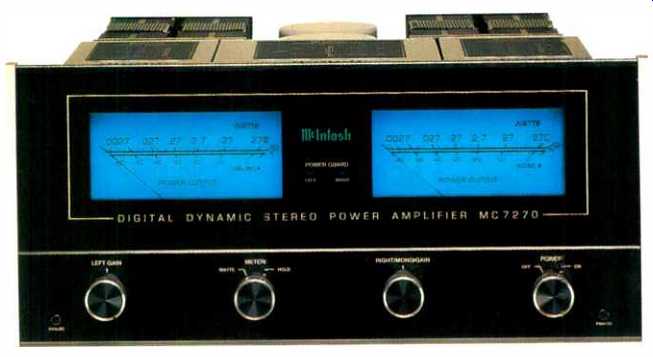
McIntosh MC7270 Digital Dynamic Power Amplifier SOUNDS BETTER
The McIntosh MC7270 is the first and only amplifier specially designed to fulfill Digital Dynamic Range demands. It outperforms all others when listening to sound derived from digitally recorded tapes, records and compact discs. The MC7270 has been designed to perform flawlessly because of this capacity for overload: 10 decibels of overstress at less than an average of 0.3% of distortion!
The noise level of digitally recorded sound is 30 decibels below that of analog recordings. The compact disc is capable of real life dynamic range while noise generated from compact discs is inaudible. With the noise restraint removed it is both easier and dramatically more enjoyable to listen to music at much louder levels. To fully enjoy this new capability your amplifier must be able to receive three to ten decibels of overstress from music, and it must do this without severely distorting the sound!
For an amplifier to handle a three-decibel overload, it must have a full time capacity of twice its full power, 10 decibels is 10 times the full power capacity of an amplifier. To provide 2500 watts of overload for a 250 watt amplifier is expensive both in the amplifier and in the loudspeaker system as well. This is the real world of Digital Dynamics Range demand. How to achieve the performance demanded, which often lasts from minutes to only a few thousandths of a second, and to achieve the goal economically, is a real achievement. Power Guard is that achievement.
If good enough will do, there are at least 100 answers for you. But if the best is what you need then there is only one real answer...the amplifier that in 40 years has outlived 60 others who have simply faded away.
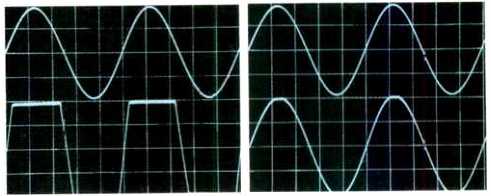
(top left) Without Power Guard: top wave form is the input
to a power amp. It exceeds input rating by 10 dB. Lower clipped wave form
is the output of a typically overdriven amplifier. (top right) With
Power Guard:
top wave is the input, overdriven by 10 dB. Lower wave form is the output
with Power Guard. Power Guard provides an unusual margin of safety for loudspeakers
by the prevention of amplifier chipping yet permits the MC7270 to deliver
designed maximum power. You get music, not distortion.
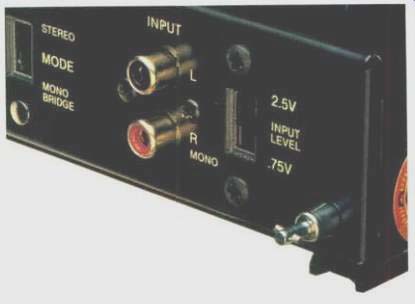
The McIntosh autotransformer provides the output transistors
an ideal load and is the path that conducts any DC away from the loudspeaker,
it also contributes a versatility in loudspeaker connecting capability not
otherwise possible. In stereo, the McIntosh autotransformer perfectly matches
the output circuit to 1, 2, 4, or 8 ohms. In mono, (McIntosh stereo amplifiers
can be interconnected for mono and deliver twice the power) the autotransformers
provide matching 2, 4, 8 or 16 ohms.
It is no accident that a McIntosh is a better investment.
It sounds better
It is more reliable
It lasts longer
Its resale value is the highest handcrafted with pride in the United States by dedicated, highly trained craftspeople.
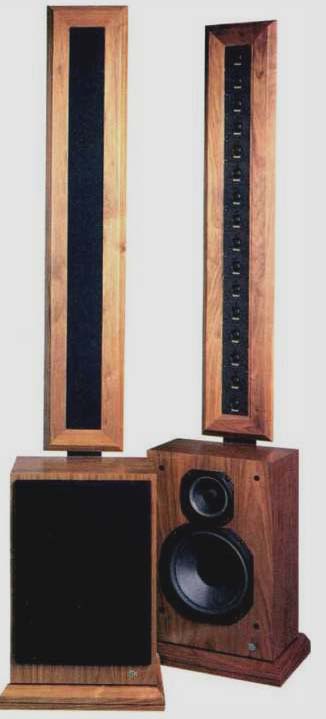
McIntosh XRT18 Loudspeaker System SOUNDS BETTER
The McIntosh XRT 18 system produces sound images that are amazingly life-like. You'll hear stereo images that have depth and space dimensions that are so realistic, so satisfying that you will feel aware of the dramatic emotional intensity of your first experience of live music.
This miracle of sound recreation does not happen by accident. To reproduce the power, the clarity, and the pure musical expression of a triple fortissimo it takes a lot of individual speaker mechanisms. All of these must be coordinated in time and intensity to achieve the uniformity of sound field from left and right, to produce sound images, wide, deep, accurate, realistic and satisfying, flow we combined all of these radiators in the correct combination of pairs of radiators, controls of energy and time is the story of the XRT 18 system.
The many ways to connect 16 (per side), high frequency radiators, the many combinations of time control, energy control and radiator pairs must be explored to unlock the secret of the XRT 18 performance is truly amazing and could never be explored in several lifetimes by trial and error. Only by using mathematical processes could all of the possibilities by analyzed in search of the one right solution.
The complete mathematical expression for any point in the sound field of these systems contains 128 terms! This equation, to achieve even sound spectrum, required a solution for each five degrees of elevation and each five degrees of azimuth in front of and to the sides of the speakers. Every term was varied to search for the optimum combination. In all, some 92 million calculations were made. This effort would have taken years on an advanced desk top scientific computer. It required 91 hours of calculations by a super digital equipment computer to unlock the secret of the one of these millions of possible solutions!

The core of the concept of the XRT 18 system involved not only the usual guidance from years of experience and the intuitive vision of a new possibility, but in this case it centered, as well, around a one and only choice from hundreds of possible cones, suspensions, magnets, magnetic assemblies, crossover network components, enclosure volume, stiffness and geometry. That one critical choice is an optimized interrelatedness which yields, via computer modeling, the extra smoothness of the time and energy response fields which has eluded researchers for decades.
XRT 18 Available in Oak, Walnut or Satin Black. Bass Cabinet: Select veneer protected by a multi-coat, satin lacquer finish covering 3/4" (1.9 cm) high-density particle board with internal bracing, airtight assembly. Tweeter Column Array: Machined from solid Walnut or Oak, protected by a multi-coat, satin lacquer finish, CS 18 Tweeter Stand (accessory): Moldings machined of select solid oak or walnut.
For Information on McIntosh products please send your name, address and phone number to:
McIntosh Laboratory Inc.
Department 118A
PO Box 96, East Side Station, Binghamton, NY 13904-0096, USA
Handcrafted with pride in the United States by dedicated, highly trained craftspeople.
----------------------
(Source: Audio magazine, Nov. 1988)
Also see:
McIntosh -- The Leader in Stereo Technology (Nov. 1990)
McIntosh -- Quality…for the Love of Music (Sept. 1990)
= = = =